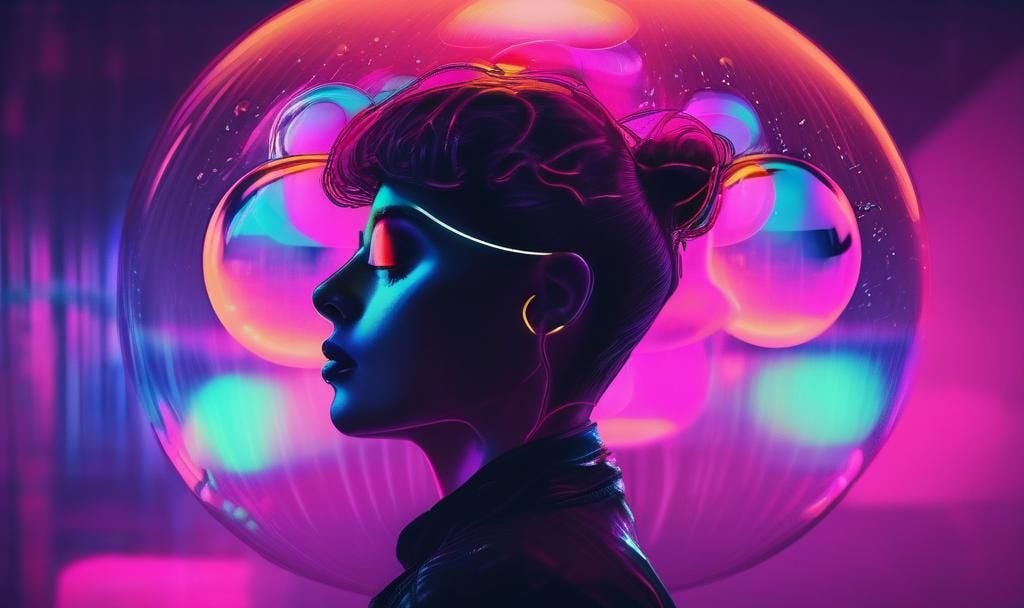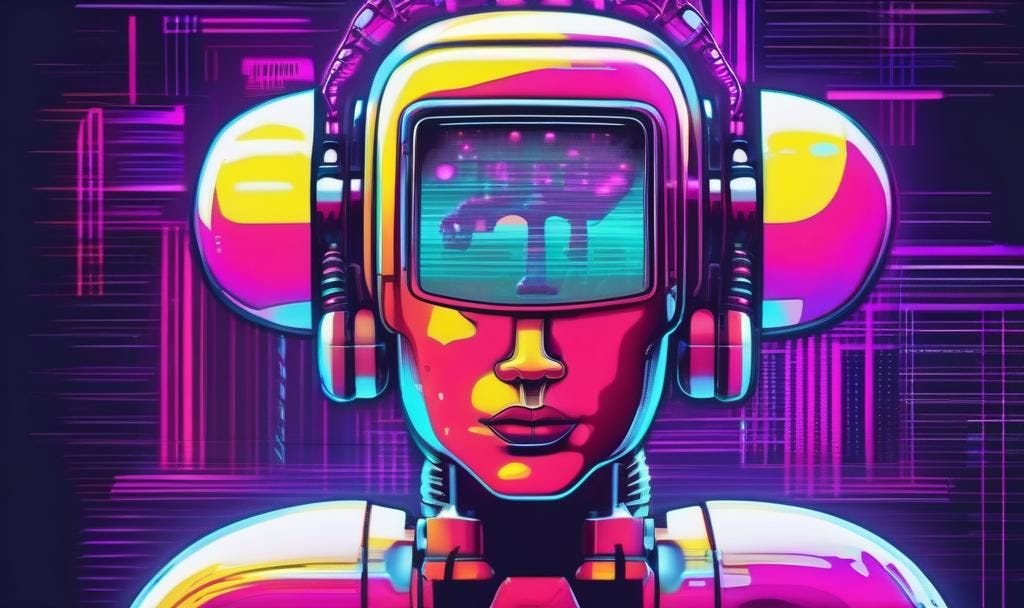Innovating for Imagination
How humans and AI can work together to achieve new standards of success
Have you ever considered what we lose when we simplify the intricacies of human values to fit into the context of AI?
Sure, we all know what values like empathy, resilience and curiosity are on the surface - but how often do we take the time to dive into the complexity of their layers?
When it comes to translating values into AI, we have the tendency to simplify these vibrantly intricate concepts into single straightforward facts.
Though this translation may be necessary to make values functional in the context of AI, it is important to take a step back now and again to recall and explore the complex roots of these values in the human context.
Why? Because it is within these layers we find the hidden sparks of inspiration that will drive a new human-centric standard of AI development.
So, as I risk this newsletter edition becoming entirely too philosophical, allow me to demonstrate what I mean by searching for AI innovation within the complexities of human values.
Buckle up folks, we’re deep diving into the value of imagination.
TL;DR - It is the human layers of imagination that drive truly resonating innovation. AI is just the sidekick that helps kickstart the process.
A little background before we begin…
Thanks to a children’s book character called Luna, imagination has been on my mind these past few weeks. Specifically, how our human imagination fits into in a world that is increasingly artificially generated.
The interesting thing about imagination is that both our creativity and knowledge can be rooted in it. Our ability to imagine shapes our thinking into what could be possible in the world - and then leaves it to our creativity to either bring that thing to life, or our reasoning to test the hypothesis of whether or not it could be true knowledge.
Powerful stuff if you ask me.
The problem is, as we explore AI tools like LLMs and image generators, we seem to be losing sight of what is distinct about human imagination versus what are the unique qualities AI can bring to the imagining process.
So, naturally, I took to LinkedIn to see if you all were noticing the same phenomenon, and to ask what your opinions were on the role of imagination in the future of AI?
I asked, and you all had fascinating answers. Taking community comments from the post, we’re going to use your thinking to reflect on some of the hidden complexities of imagination and what this means in the world of AI.
Breaking the Rules of Reality
Let’s start by talking about one of the biggest differences between humans and AI: our ability for something called creative imagination.
Daniel Englebretson writes:
What Daniel is talking about here when he says imagination is willfully breaking the rules can be attributed to a layer called creative imagination - i.e. our ability to connect ideas in unexpected and unconventional ways.
Creative imagination: Combining ideas in unexpected and unconventional ways
While AI is limited to preexisting rules and data, humans are able to creatively navigate outside of these constraints. Simply put, our creative imagination can break whatever rules of logic currently exist, whereas AI cannot.
Think of it this way, life is full of patterns. Some patterns are conventional, like a clear paved road. Other patterns are not necessarily conventional but are obvious, like a well worn path. Still other patterns are unconventional and unobvious, but are still there nonetheless, like faint footprints across a grassy field.
AI must follow these patterns, it does not have the ability to stray from a preexisting path. Although it may seem at times like AI is creating new paths, in reality it was has found a faint path of footprints we were not able to see before.
Humans, on the other hand, are not strictly bound by these patterns. While AI can only follow a pathway that is already there, our imagination gives us the ability to walk straight off into the unknown, creating a new path in the process.
Taking a Walk in Another’s Shoes
Once we break the rules, how do we know what we are creating will resonate with others? This is where something called recreative imagination, another attribute unique to humans, comes into play.
Reflecting on Michelle Pontes’ comment:
Michelle talks about experiential depth, and how we as humans have the ability to draw on our experiences to feed our imagination. The interesting thing though is that when we talk about experiences, we are not only talking about our own individual ones.
As humans, we have the ability to imagine beyond first-hand experience. By imagining ourselves, or the world, from another person’s point of view, we are able to experience perspectives beyond our own. This ability is known as recreative imagination.
Recreative imagination: An ability to experience or think about the world from a perspective different from your own
While we have the ability to imagine ‘walking a mile in another’s shoes’, AI is only able to statically predict the average experience of any given person, provided the demographics of that person are well defined.
A small nuanced difference, yet it can have significant implications in action.
Allow me to demonstrate. There is a German movie called Ich bin dein Mensch (I’m Your Man) in which a female university professor participates in a social experiment that involves her dating a robot that has been designed to be her perfect man - or at least statistically speaking.
In this movie there is a scene where the professor comes home to the robot having drawn a bath, filling it with bubbles and rose petals, and is sat next to the tub with two glasses of champagne.
When the professor reprimands the robot, the robot becomes confused telling her he doesn’t understand why she isn’t happy given a romantic bubble bath with champagne is what “93% of German women dream of”. To which she flatly replies “Then you’ve met one of the 7%.”
Although AI can bring us insight into different perspectives, the perspectives that it provides are only statistical predictions based on the data it has on any given demographic. In other words, this is a far cry from the ability to imagine the world from the unique perspective of the individual person standing in front of you.
So while AI can help fill information gaps on the romantic dreams of 93% of German women, it is up to the human imagination to understand the remaining 7% if there is to be any chance of truly resonating with the individual.
So what?
Now we’ve reached the fun part. These are very subtle differences in imagination we are talking about here between humans and AI, so why does it even matter?
It matters because if we were to offload our imagination completely to AI, it wouldn’t take long for the artificial creativity, innovation and content to disconnect from what we as humans need and crave. Rob van der Veer put this perfectly, saying:
It is our ability for creative imagination that helps us break the rules when necessary, cutting new paths and patterns of innovation that would be otherwise impossible for AI. This is what keeps us moving forward, constantly reinventing the cutting edge as our needs evolve.
It is our capacity for recreative imagination that enables us to see life from another’s perspective at a level of nuanced detail irrespective of statistical norms. This is what empowers us to fine tune our creativity so that it reaches the depth of purpose we crave.
It is the human layers of imagination that drive truly resonating innovation. AI is just the sidekick that helps kickstart the process.
My Challenge to You
To wrap things up, let’s make this a little less theoretical and bring these concepts to life in our use of generative AI tools.
Currently, we tend to only engage with our imaginations briefly when writing a prompt - and then leave the rest up to our AI model of choice.
My challenge to you is to shake things up a bit and shift the emphasis of imagination back onto the human. Instead of just going with what the AI outputs as a final result, use it as a jumping-off point to reengage with your imagination and push yourself beyond the generated content.
Respond to this email or tag me on LinkedIn with your results - I can only imagine what you will discover 😉













Probably one of the most valuable things AI triggered is that now we are investigating imagination and similar topics more deeply and it’s an exciting time to see what that conversation will yield!